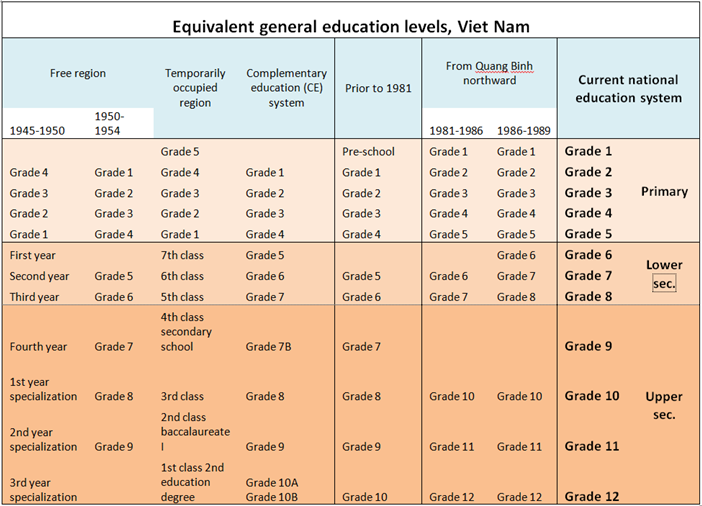You are here
Measuring educational attainment and inequality in Viet Nam
Measuring educational attainment and inequality in Viet Nam
By Charles Gale, Research Associate, Education Policy and Data Center
Educational attainment and average years of schooling provide important measures of human capital level among populations or sub-populations. The Education Policy and Data Center (EPDC) publishes educational attainment and average years of schooling data extracted from Demographic and Health Surveys (DHS) or Multiple Indicator Cluster Surveys (MICS). These surveys typically ask respondents who are five years of age or older to report the highest schooling level they have been enrolled in, as well as the highest grade they completed at that level. As the data can then be broken down by gender, household wealth, and subnational region, it provides an important source for understanding education inequalities across regions and sub-populations.
A challenge in our understanding of years of schooling and educational attainment comes when the duration of schooling levels in a country are not static over time or across regions. Some countries may have undergone changes in the official durations of schooling levels, or may have different curricula depending on one’s region of residence. For example Viet Nam, a country that has undergone enormous transitions in recent decades, also had a fractured educational system with parallel schooling levels of different durations which have changed several times since the 1950s. Box 1 is adapted from a “grades conversion table” which was provided to MICS enumerators during 2011 data collection.
Box 1 – Adapted from Viet Nam: Monitoring the Situation of Women and Children, Multiple Indicator Cluster Survey, 2011 Appendix F

As can be seen, respondents who completed grade 7 may have actually completed a different total number of years of schooling depending on the years they attended school and the schooling system that was in place within their region of residence. A respondent who completed grade 7 in the northern area of the country during the 1980s may or may not have completed the equivalent of lower secondary schooling, while a respondent who completed grade 7 prior to 1981 would have completed their first year of upper secondary. Beyond this, in the absence of a method for standardizing this information within the country, they would each be considered to have 7 total years of schooling, which may not be the case[1].
It should be noted that the attainment data produced for these hypothetical respondents would not necessarily be incorrect; they would be coded “complete” or “incomplete” secondary schooling. Moreover one could argue that the difference between 7 and 8 completed years of schooling is a negligible one and would not have a large impact on the overall data. However, if one sees a primary function of household surveys as demonstrating levels of within-country inequality, these differences between regions, ethnic groups or other ways of disaggregating may be consequential to our understanding of education and human capital levels in Viet Nam. The Viet Nam MICS attempts a novel way of rectifying the issue, instructing enumerators to assign a number of years and school level that is standardized and based upon the current national system.
For more information on issues related to educational attainment of populations, a good resource is the work of Robert J. Barro and Jong-Wha Lee. EPDC will also issue a post discussing an indicator, Mean Years of Schooling, which UIS has recently published, which is based on the methodology developed by Barro and Lee.
-
Viet Nam’s experience as a unified country emerged from decades of conflict may in some ways provide a model for other post-conflict countries. Is it wise for other countries to adopt such methods of standardization that Viet Nam has attempted with the 2011 MICS?
[1] The wording of the questions, “What is the highest level of school (name) attended?” and “What is the highest grade (name) completed at this level?” are standard across most DHS and MICS questionnaires.

Add new comment